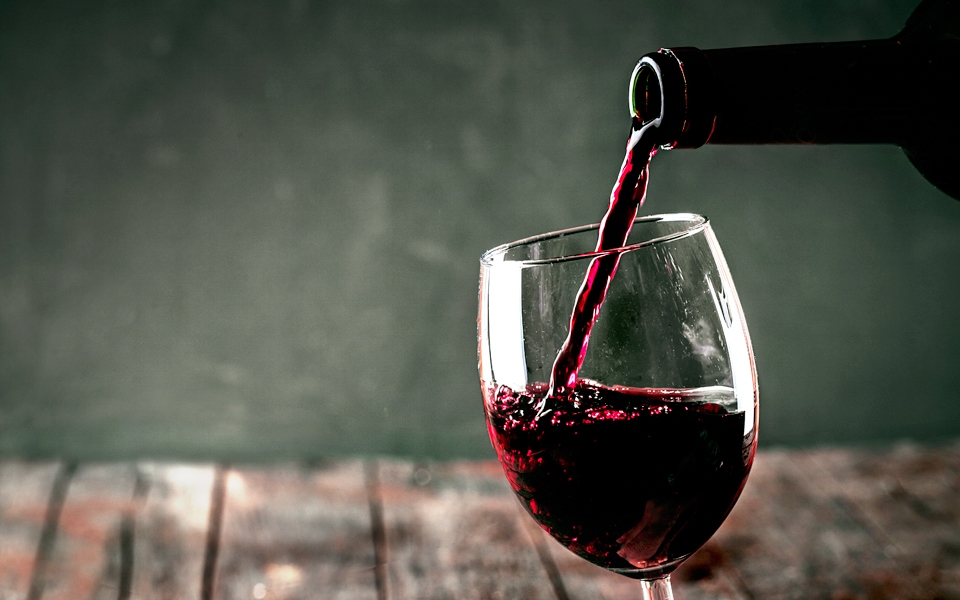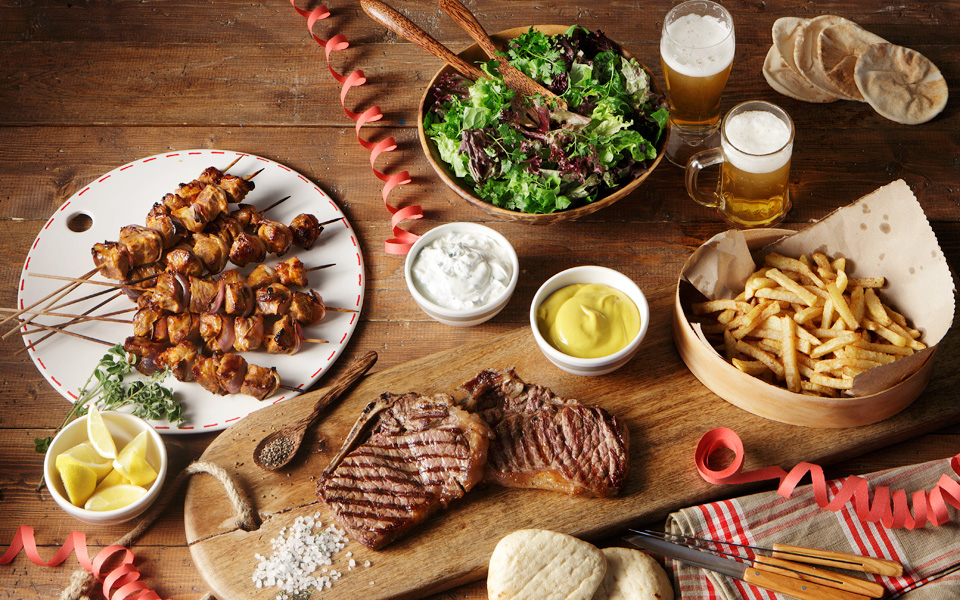It’s Apokries, as carnival time is known in Greece, and the time of year when meat is consumed in huge amounts before Lent, which is, traditionally, meat-free.
Unlike northern Europe, in Greece, ducks and geese are at their best in the summer, giving rise to the popular saying “January, chicken pie and duck in July.”
Traditionally, sausages top the list during carnival season, cooked or grilled to accompany all types of alcohol.
Pork is roasted, cooked in casseroles or braised with spaghetti. Often, pork and beef are cooked in the pot together.
Beef roast is also considered a carnival food, cooked with garlic and a thick red sauce flavored with cinnamon and cloves, and always accompanied by spaghetti. In the old days, the roast was made with a goat leg and was infinitely tastier than beef.
Whatever the type of meat, it is accompanied by pasta on Carnival Sunday (the penultimate Sunday of the carnival season).. In the days leading up to Carnival Sundays, the menu includes kavourma (smoked ham) with sausages and the Greek version of crackling, tsigarides (these days replaced with bacon) cooked in oven-baked omelettes (froutalia), with pasta or cooked with fragrant greens and leeks.
On one of the less official carnival days, my mother (and others) used to cook a delicious pilaf, the kind which we now call risotto, with pork chops in red sauce. She’d serve the rice perfectly cooked and creamy, smelling of cinnamon, allspice and black pepper. Some call it atzem pilaf and it takes skill to ensure that it doesn’t come out too thick or too watery. She never added cream, butter or parmesan. She’d serve grated Kefalotyri in a bowl on the table and whoever wanted some could add a little to their plate.
The week from Sunday leading to Carnival Sunday is said to be the week when the souls of those who have passed away enter the heavens. It’s also the week when the religious protocol of not eating meat on Wednesday and Friday is ignored by everyone. The Thursday of this week is called Tsiknopempti, literally Charred Thursday and is the day when the air is heavy with the smell of roasting meat on barbecues, carrying the carnivorous message of the day far and wide.

What to drink at the carnival table
As a rule, meat is accompanied by red wine, but this varies according to a number of factors. Which meat is cooked and how? Medium, well done, with rich sauces or simply grilled? Is it served warm or cold? Here’s some advice to choose the best wine for your carnival table.
The all-time favorite of beef goes well with different varieties of red wines – from Cabernet Sauvignon to Merlot and Syrah, ripe Agiorgitika and blends based on Xinomavro, as well as Cretan labels. Lamb should be accompanied by something finer. Rich Bordeaux blends and their Greek versions, along with Rioja and classic Chianti are good choices. Pork, a more easygoing meat, can be accompanied by both red and white wines – Merlot, Syrah, Agiorgitiko, and Chardonnay.
As for the sausage, which is everywhere on these days, red is the obvious choice, but choose one with high acidity to balance the oiliness. Look for a rosé and fresh red wine from the barrel. When the sauce is rich and concentrated, match it with a complex, concentrated wine as well.
Spicy sauces demand the sweetness of ripe fruit, while lemon sauces match best with white wines and rosé. Lightly grilled meat balances well with the strong tannins of fresh, red wines, while meat that’s well done (we’re not talking burnt, of course!) is best accompanied by more stylish, mature wines.












